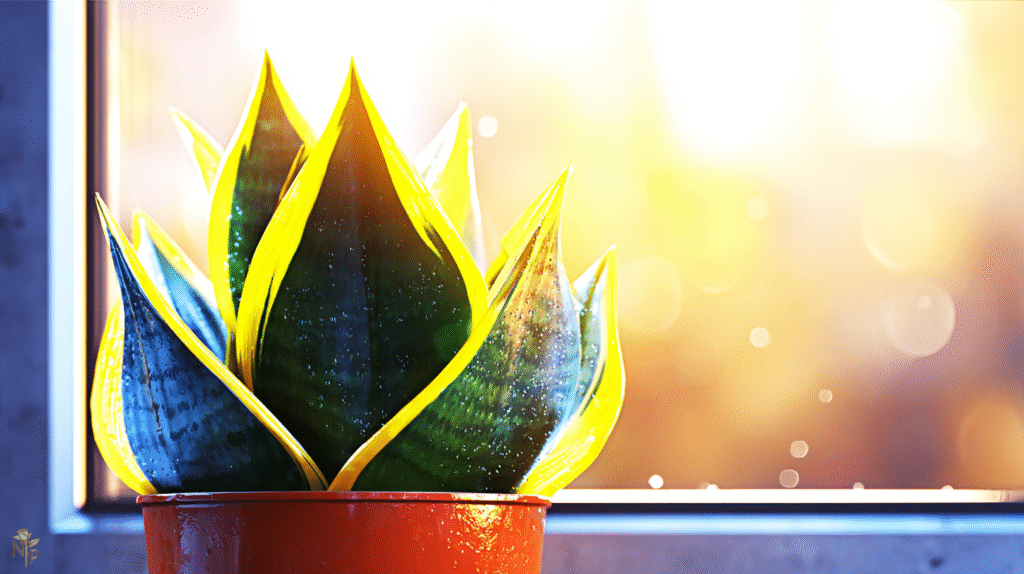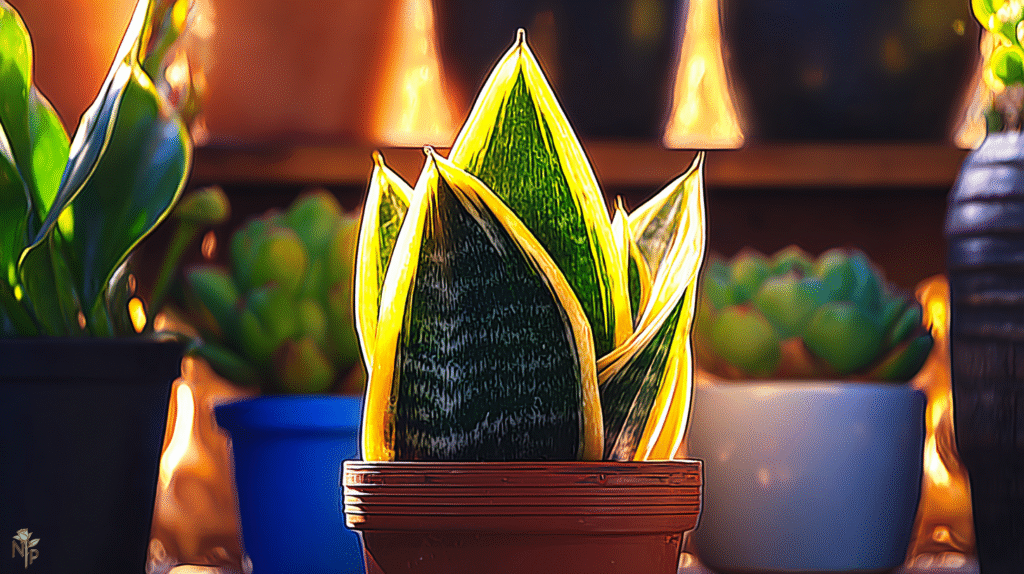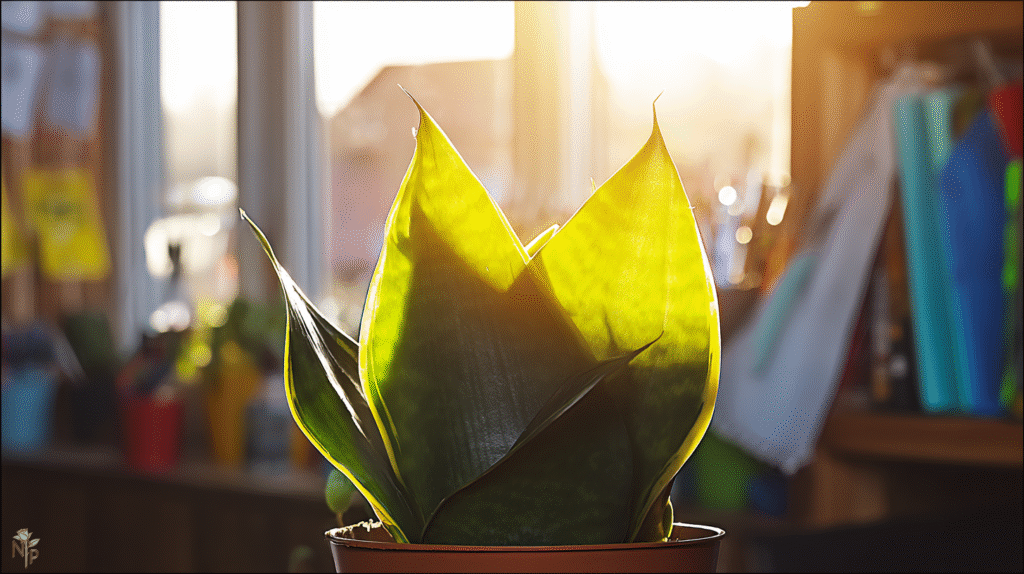Okay, I need to come clean about something. Remember that gorgeous snake plant everyone said was impossible to kill? Yeah, well… I killed three of them. In a row. The third one hurt the most because by then I thought I’d figured it out.
Picture this: Me, standing over a pot of mushy, yellow leaves that smelled like a forgotten gym bag, wondering how I managed to murder yet another “indestructible” plant. The thing that really got me? My neighbor’s snake plant had been thriving in her hallway for five years, and she literally forgot it existed half the time.
That’s when I got stubborn. Really stubborn. Started reading everything, talking to every plant person I could find, and basically turned into a snake plant detective. Now? Eight healthy snake plants later (yes, eight – I may have gone overboard), I finally get why mine kept dying while everyone else’s thrived.
Here’s the Thing Nobody Tells You
Snake plants aren’t actually that easy. There, I said it. They’re easy once you stop doing all the “helpful” things that slowly kill them. It’s like that friend who says they’re “low maintenance” but actually just wants you to leave them alone unless they text first.
My biggest mistakes? Oh boy, where do I start:
First, I thought “low light tolerant” meant they loved dark corners. Nope. That’s like saying you can survive on crackers – technically true, but you’re not gonna thrive.
Second, I watered them like my other houseplants. Weekly. With love and enthusiasm. Turns out snake plants interpret frequent watering as an assassination attempt.
Third, I kept moving them around, trying to find their “perfect spot.” These plants hate change more than cats do.

Let’s Talk About Water (Or Why Less Really Is More)
After killing plant number three, I finally asked my thriving-snake-plant neighbor for her secret. Her response? “Oh that thing? I water it when I remember. Maybe once a month? Sometimes less.”
I thought she was joking. She wasn’t.
Here’s my current watering routine that hasn’t killed anyone yet:
- Summer months: Every 3-4 weeks, sometimes longer if it’s been humid
- Winter months: Maybe every 6-8 weeks? Honestly, I’ve gone three months
- My test: Stick your finger in deep – like, really deep. Still feel moisture? Walk away.
But here’s the game-changer nobody mentions: the chopstick trick. Grab a wooden chopstick (steal one from takeout), shove it deep in the soil, leave it for a minute, then pull it out. Soil stuck to it? Don’t even think about watering. Clean chopstick? Your plant’s actually thirsty.
The first time I waited a full month to water, I was convinced I was torturing my plant. Instead, it sprouted two new leaves. Go figure.
Light: The Goldilocks Situation
Everyone says snake plants tolerate low light, which is technically true. My snake plant in the bathroom has been alive for two years. Alive. Not living its best life, just… existing. Like that job you stay at because it pays the bills.
Meanwhile, the one sitting three feet from my east-facing window? That baby’s popping out new growth like it’s getting paid for it. Even flowered once, which I didn’t know snake plants could do until it happened.
Here’s what actually works:
- Morning sun through a window? Golden.
- Bright room but no direct afternoon sun? Perfect.
- Fluorescent office lights? Decent enough.
- That dark corner behind your couch? Sure, if you want a depressed plant.
The truth is, more light equals happier plant. Just don’t stick it in blazing afternoon sun unless you want crispy fries instead of leaves.
Soil: My Expensive Education
I must’ve spent $50 on different “perfect” soil mixes before I figured this out. Those bags labeled “succulent and cactus mix”? Half of them hold water like a sponge. Learned that the hard way when plant number two developed root rot.
Now I make my own mix, and it’s stupid simple:
- Half regular potting soil (the cheap stuff works)
- About 30% perlite (those white styrofoam-looking things)
- The rest? Coarse sand or tiny gravel
Mix it up, and when you water, it should drain fast. Like, water should be coming out the bottom within 30 seconds fast. If water’s sitting on top like a puddle, your mix is too dense.
The Pot Situation (This Matters More Than You’d Think)
You know those gorgeous ceramic pots with no drainage holes? Yeah, those are snake plant death traps. I don’t care if the lady at the plant shop says you can “just add rocks at the bottom” – that’s like saying you can breathe underwater if you hold your breath really well.
Get a pot with holes. Period. And honestly? Those cheap terracotta pots are snake plant heaven. They’re ugly, sure, but they let the roots breathe and the soil dry out. I hide mine inside pretty pots if I’m feeling fancy.
Size matters too. These plants actually like being a bit squished. That massive pot you think they’ll “grow into”? They’ll sulk in there forever. Go maybe an inch or two bigger, max.

When Things Go Wrong (And They Will)
Yellow, mushy leaves? You’re loving it to death with water. Stop immediately. Actually, unpot it, cut off anything brown or mushy (be ruthless), and replant in dry soil. Don’t water for at least a week. Maybe two. It’ll feel wrong, but trust me.
Brown, crispy tips? Could be your tap water – these plants are surprisingly picky about chemicals. Or maybe the air’s super dry. Honestly? I just trim the brown bits with scissors and pretend it didn’t happen.
Not growing at all? Move it closer to light. Seriously, that’s usually it. Or it’s too cold – these are African plants, they hate being cold more than I hate Monday mornings.
Weird white fuzz? Mealybugs. Gross but fixable. Rubbing alcohol on a cotton swab, wipe them off like you’re cleaning your phone screen. Check weekly until they’re gone.
The Propagation Experiment That Blew My Mind
So get this – you can literally cut a leaf into pieces, stick them in water, and grow new plants. First time I tried, I was convinced I was just making snake plant salad.
Cut a healthy leaf into 3-inch pieces (mark which end was down or you’ll plant them upside down like I did once). Stick the bottom end in water. Change the water weekly or it gets funky. In about a month, roots! Then tiny baby plants! It’s basically magic.
Fair warning though: if you’ve got one of those fancy yellow-edged varieties, the babies come out plain green. Found that out the disappointing way. Want to keep the yellow edges? You gotta divide the whole plant at the roots.
My Current Snake Plant Gang
After all my murders and resurrections, here’s what’s survived:
- The Original Survivor – my basic green one that lived through everything
- Drama Queen – a ‘Laurentii’ with yellow edges that wilts dramatically when thirsty
- The Weirdo – cylindrical one that looks like green fingers pointing at the ceiling
- Silverado – ‘Moonshine’ variety that’s this incredible pale silver-green
- The Giant – got this one free from someone who was moving, it’s four feet tall
- Bathroom Buddy – the one barely surviving in low light but refusing to die
- Kitchen Counter – sits by the window, grows like it’s on steroids
- The Accident – grew this from a leaf that broke off during repotting

Why I’m Never Giving Up on Snake Plants
Look, after everything these plants have been through with me, the fact that any survived is a miracle. But here’s why I love them now:
They survive my work trips. Left for three weeks once, came back to happy plants. Try that with a maidenhair fern.
They actually clean the air. NASA said so, and if it’s good enough for space, it’s good enough for my apartment.
They’re predictable once you know them. No mysterious ailments or sudden deaths. They tell you what’s wrong in obvious ways.
And honestly? There’s something weirdly satisfying about finally understanding what makes them tick. It’s like solving a puzzle, except the puzzle cleans your air and looks good on Instagram.
The Bottom Line
If you’re reading this with a dying snake plant next to you, here’s your rescue plan: Stop watering so much. Move it to better light. Make sure that pot has drainage holes. Then – and this is crucial – leave it alone.
The secret to snake plants isn’t doing more. It’s doing way, way less. They don’t want your constant attention. They want you to water them occasionally, give them decent light, and otherwise pretend they don’t exist.
Trust me, I’ve got the dead plant receipts to prove it. But I also have eight thriving ones that prove even a reformed plant killer can figure this out. You’ve got this. And if you don’t? Well, snake plants are pretty cheap. Just saying. 🌱






